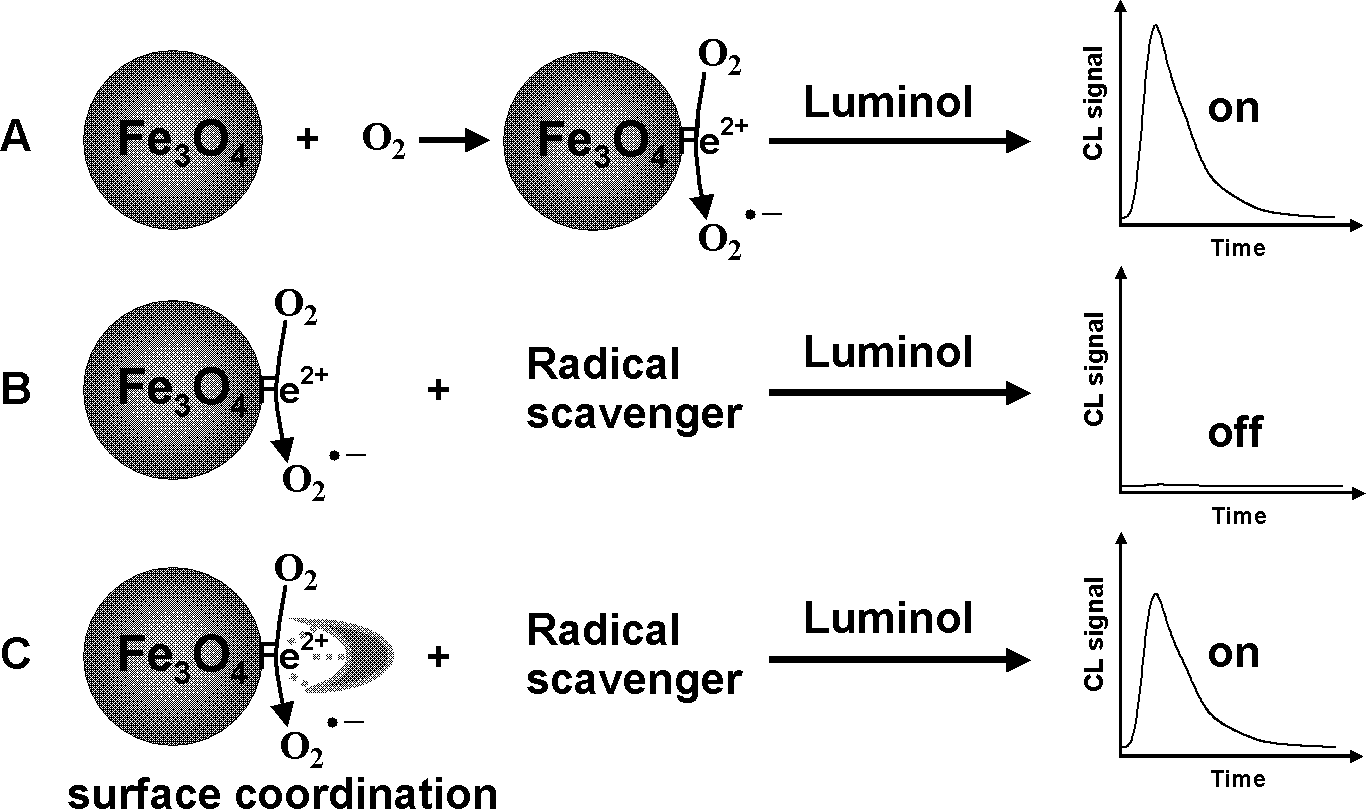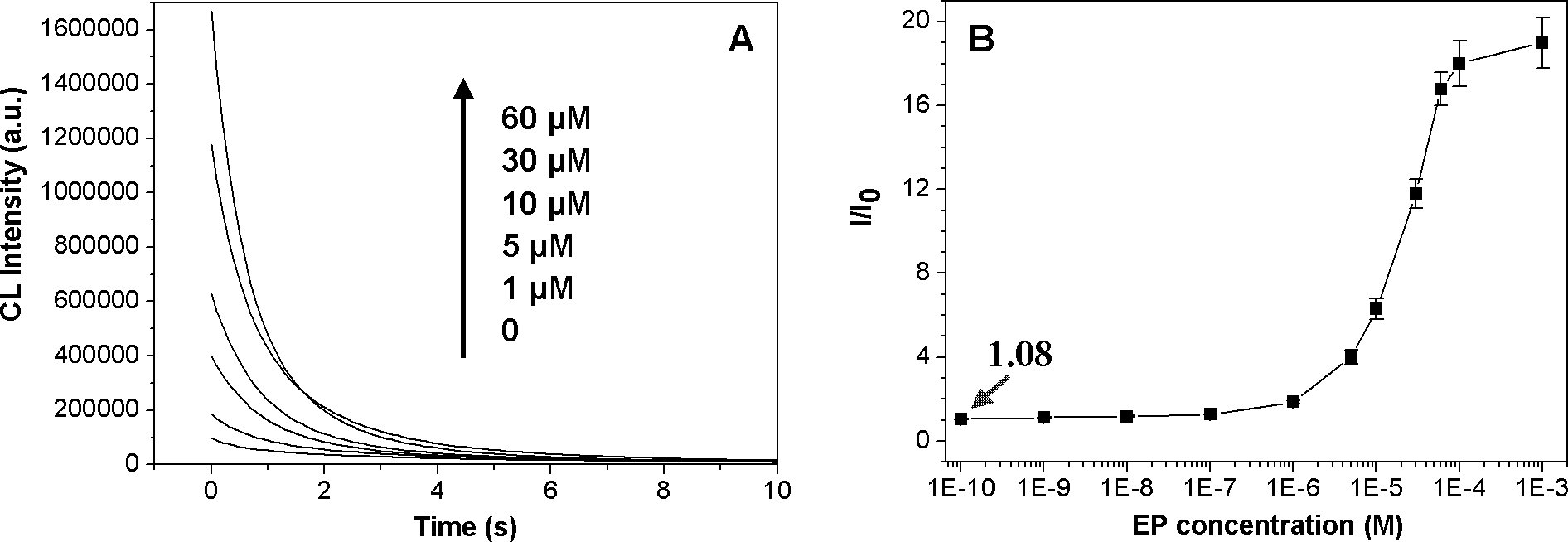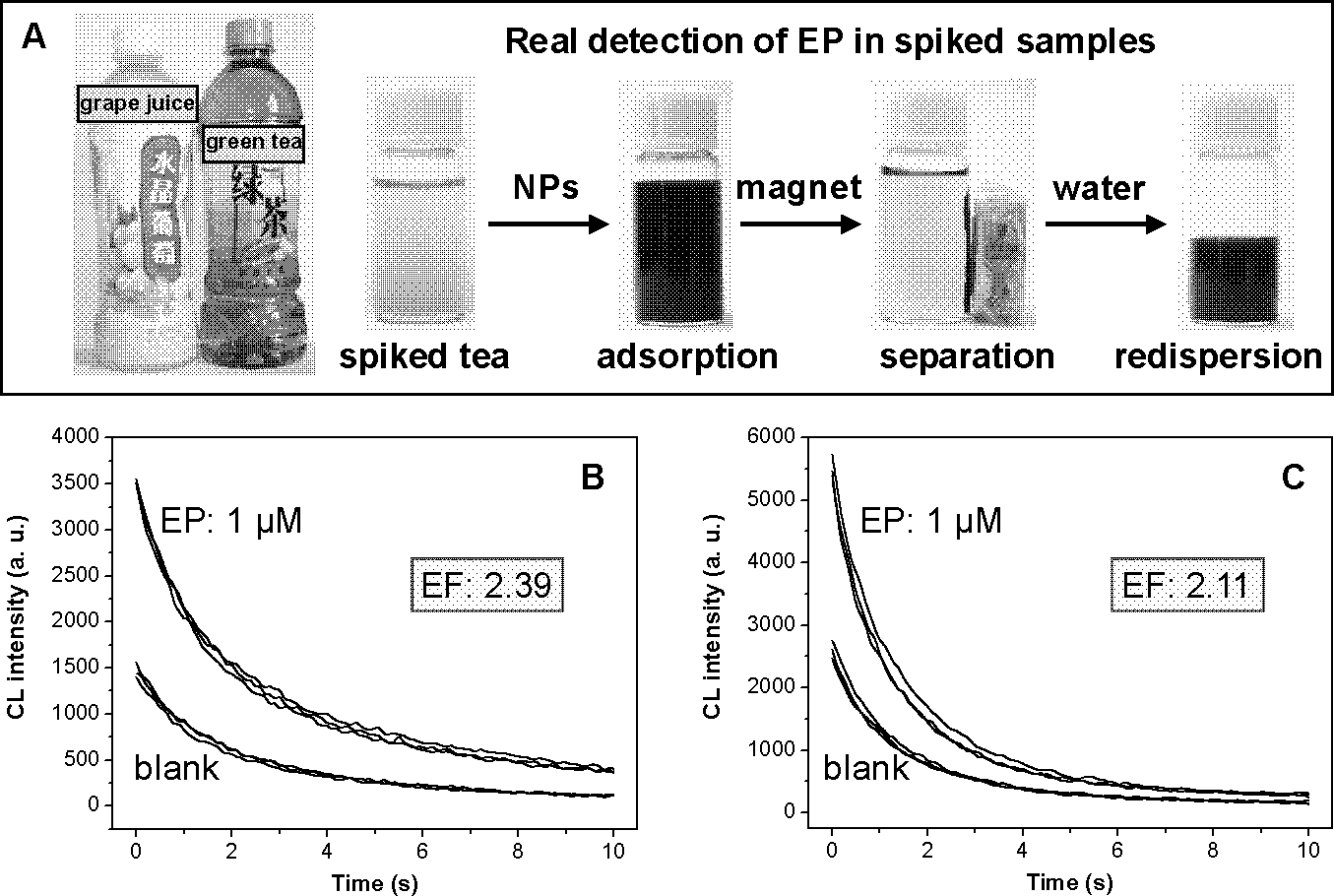Chemical luminescence enhanced type method for detecting pesticide residues
A chemiluminescence and pesticide residue technology, applied in the field of chemiluminescence analysis and detection of trace agrochemicals, chemiluminescence enhanced detection of pesticide residues, can solve the problems of high price, poor sensitivity and selectivity, unfavorable popularization and use, etc., to achieve High sensitivity and outstanding effect
- Summary
- Abstract
- Description
- Claims
- Application Information
AI Technical Summary
Problems solved by technology
Method used
Image
Examples
Embodiment Construction
[0025] Now use 99% ethanol as a free radical scavenger and magnetic Fe 3 o 4 Nanoparticles are taken as an example and non-limiting examples are described as follows:
[0026] 1. Magnetic Fe 3 o 4 Preparation of nanoparticles
[0027] Co-precipitation method reported in reference L.Z.Gao et al, Nat.Nanotech., 2007, 2, 577.
[0028] Add 10 μL of HCl into 20 mL of deionized water, pass nitrogen to remove oxygen for 30 minutes, then add 2.4 g of FeCl 2 4H 2 O and 4.6 g FeCl 3 ·6H 2 O, after ultrasonic dissolution, it was filtered and transferred to 80 mL of deionized water passed through nitrogen to remove oxygen, and a nitrogen atmosphere was maintained. Subsequently, 10 mL of ammonia water was added dropwise to the above solution, and the solution quickly turned yellow, and the color gradually deepened, and then turned black. After the dropwise addition was completed, the temperature of the system was raised to 40° C. for 0.5 hours of reaction, and then the temperature...
PUM
 Login to View More
Login to View More Abstract
Description
Claims
Application Information
 Login to View More
Login to View More - R&D
- Intellectual Property
- Life Sciences
- Materials
- Tech Scout
- Unparalleled Data Quality
- Higher Quality Content
- 60% Fewer Hallucinations
Browse by: Latest US Patents, China's latest patents, Technical Efficacy Thesaurus, Application Domain, Technology Topic, Popular Technical Reports.
© 2025 PatSnap. All rights reserved.Legal|Privacy policy|Modern Slavery Act Transparency Statement|Sitemap|About US| Contact US: help@patsnap.com



